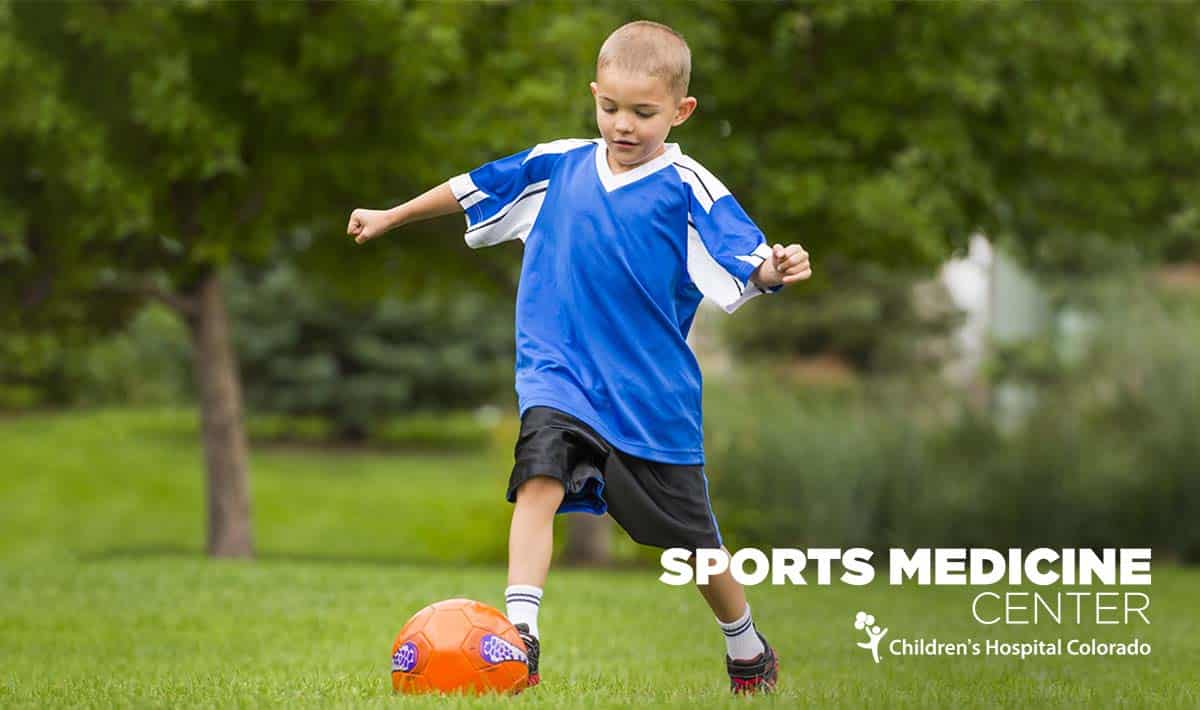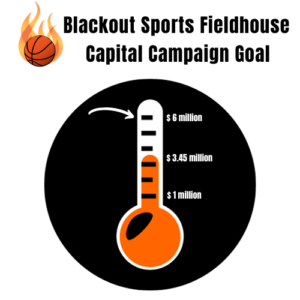Physical activity has been proven to help boost self-esteem and focus while decreasing anxiety and depression. Despite these positive effects on mental health, many children and teens don’t get the recommended amount of physical activity. So how can you help your child be more active and support their mental health? Experts at Children’s Hospital Colorado share important tips on how parents and caregivers can make exercise fun and enjoyable for children of all ages.
It’s well established that exercise and physical activity are crucial to a child’s development and overall health. But despite the many proven benefits of an active lifestyle on children’s physical, mental and emotional well-being, only one in four children in the U.S. is getting the recommended amount of physical activity each day. Getting kids moving — no matter the time of year — is important now more than ever as rates of depression and anxiety in youth have surged.
Both the Centers for Disease Control and Prevention and the American Academy of Pediatrics recommend kids get at least one hour of physical activity every day. If you’re thinking, “Who has time for that?” then trust us: You’re not alone. We spoke with Katharine Reynolds, PhD, and Jessica Hawks, PhD, two child and adolescent psychologists in our Pediatric Mental Health Institute, about the mind-body connection, how exercise and play help with mental health and what counts as “enough” physical activity for kids. Let’s dive in.
Mental health and exercise: the brain-body connection
Anyone who’s ever gone for a walk to shake off a hard day knows that a little exercise can do wonders for a bad mood. The same is true for kids. The fact is, when we work our muscles, it makes us feel good and promotes body positivity. Plus, studies increasingly show that mental and emotional health can be improved through exercise, both in the short and long term.
Exercise builds brain power
“Studies have shown that simply getting cardio exercise on a regular basis actually improves certain beneficial hormones in our bodies in the same way that antidepressants can,” says Dr. Hawks. That’s because chemicals in our brains that affect mood, such as serotonin, stress hormones and endorphins, change when we exercise. Even a single session of cardiovascular activity can increase levels of helpful chemicals and decrease stress hormones, which can help curb negative thinking.
Learning new things builds self-esteem
Not only do increases in these feel-good chemicals help with anxiety and depression, Dr. Reynolds says, but exposing kids to different types of exercise allows them to further develop their self-esteem. This could be through play, team sports, individual sports, dance or even outdoor exploration. No single activity is right for all kids, though.
“It’s important to see which sports or activities best fit your child and allow them to experience the sense of mastery that comes with practice,” Dr. Reynolds says. For example, a child who doesn’t have the best hand-eye coordination may dislike baseball but find enjoyment in mastering karate. Finding the activity that best supports your child’s interests and skills greatly helps children see themselves in a positive light.
How much exercise do kids and teens need?
With hectic and often stressful family schedules and the many expectations put on parents and kids alike, it’s understandable that exercise may not always make it to the top of your to-do list. But don’t worry: It’s easier and simpler than you might think!
Physical activity requirements for children and teens
Recommendations vary slightly by age and activity, as outlined by the American Academy of Pediatrics, but even infants need physical movement to develop and thrive (think tummy time). Generally, pediatricians and public health experts recommend:
Children ages 3 to 5
- Be physically active most of the day through play and exploration
Children ages 6 to 17
- Get at least one hour of moderate to vigorous physical activity each day, or seven hours per week
- A mix of the three kinds of exercise (aerobic, muscle strengthening and bone strengthening), aiming for three days per week of each
What does moderate to vigorous mean?
Moderate to vigorous activity means an activity that increases breathing and heart rate enough to get kids sweating and breathing deeply. So, kids 6 and older should be playing hard enough to break a sweat or breathe heavily for about an hour each day. That may seem like a lot, but we’ll help break it down.
No time for physical activity? No problem
People often think of exercise as a scheduled, intense activity that must be done all at once. However, we know that breaking up that hour into shorter spurts is just as effective as doing it all at once. Even better news? Active play — say, hanging on the monkey bars — counts as physical activity.
Here are a few pointers for making activities manageable while still reaping the benefits of exercise for mental health:
All physical activity counts
Instead of worrying about scheduling one hour for your child to exercise each day, think about ways to incorporate play and exercise throughout your day and week. The time your child spends playing in the backyard, running at recess, walking the dog after school and going to dance class all add up.
Make it fun
If your child isn’t getting enough play time on their own, add play dates with friends or look for structured activities that they’ll enjoy. You might encourage them to join a school basketball team or participate in day camp over the summer. “Find something your child likes to do, and build that into your structure and routine,” says Dr. Reynolds. The more interesting the activity is to your kid, the better.
Mix up the type of exercise
Instead of doing the same thing day-in and day-out, it’s important to mix things up. This helps ensure your child gets the benefits of multiple kinds of exercise and — importantly — doesn’t get bored.
You want to aim for a mix of the three kinds of exercise: aerobic, muscle strengthening and bone strengthening:
- Aerobic activities get your heart pumping and your lungs expanding; think walking, running, swimming, biking and dancing. Most of your child’s physical activity should fall in this category.
- Muscle- and bone-strengthening exercises are activities that force you to work against gravity, like climbing trees or playground equipment, gymnastics, push-ups and squats, playing hopscotch or volleyball. Aim for doing strengthening activities at least three of the days in your week.
Bonus points for group and outdoor activities
Level up the mood-boosting benefits of exercise by adding on social activities and going outside. While exercise is important in itself, Dr. Reynolds notes that the social engagement that kids receive when playing with others can make exercise not only more fun but more rewarding. Interacting with peers through free play or organized activities also helps them build social skills and confidence — all things that can improve their mental well-being.
Participating in outdoor activities with kids has benefits, too. Studies show that spending just 20 minutes outside each day can:
- Decrease stress, anxiety and negative thinking
- Improve mood and self-esteem
- Reduce depression and feelings of isolation
- Reduce aggression
- Lessen the impacts of negative events
- Improve focus in children with attention deficits
So, what if you organized an afternoon nature walk for your child and their friends where they could walk, run, climb and play outside? That would be a win-win-win for their mental health. (And yours!) But it can be much simpler, too. Children’s Hospital Colorado’s partner Generation Wild has these 20 ideas for getting 20 minutes outside.
Focus on progress, not perfection
Give yourself and your family grace. On days when an hour of exercise just isn’t going to happen, remember that some exercise is much better than none. There will also be weeks when your kid doesn’t get three days’ worth of bone- and muscle-strengthening activities. That’s OK. What’s most important is increasing the amount of time your child is moving and not sitting still. Their bodies — and brains — will benefit!
Ideas for increasing your child’s physical activity
It’s important to find a way to get your heart pumping that is not only enjoyable, but also easy to work into your family’s existing routines. And the more you make moving a part of daily life, the better example you set for your kids and the more likely they are to take healthy habits into adulthood. Here are some ideas for increasing your family’s activity levels:
- Taking the stairs instead of the elevator
- Walking or biking to school or the grocery store instead of driving
- Going on a scavenger hunt
- Replacing a Sunday drive with a Sunday walk
- Doing active chores around the house such as gardening, vacuuming or window washing
- Washing the car by hand
- Walking the dog
- Doing a few push-ups, jumping jacks or crunches during the commercial breaks of your favorite show
- Singing and dancing while you pick up toys or tidy up after meals
- Going on a family walk before dinner
- Playing games like hide-and-go-seek, tag or “Simon Says” (pro tip: play along with your kids; you can incorporate weights, they can play without)
- Make-believe and imaginary games
- Free play outside
- Dancing to music
- Exercise-related games for consoles like Nintendo and PlayStation
- Family time, like shooting hoops, playing catch or challenging each other to a race
- Swimming lessons
- Running or hiking clubs
- Joining an exercise group
- Organized team sports, whether competitive or club level
- Individual sports, like running or climbing
- Dance classes
- Skiing and snowboarding
Need more ideas?
If you are at a loss for where to start, ask around. Fellow parents and community members likely know about opportunities through nearby churches, schools, recreation centers or parent groups.
Staying safe during play
Not all activities are appropriate for all age groups. For example, young children shouldn’t be weightlifting due to the strain on growing joints, bones and muscles. If you have questions about exercise or sports that are right for your child, start by asking their healthcare provider.
Remember to consider what protective equipment your child needs for certain activities, like wearing a helmet when riding a bike, and safe locations for the activity. Steer clear from playing around busy roads and cars.
A note on exercise and sleep
Exercise helps tire us out and sleep more deeply but exercising too close to bedtime can make falling asleep more difficult. That’s because exercise increases our body temperature. When we go to sleep, our core body temperature needs to drop in order to relax.
Although evening activities are sometimes unavoidable, Dr. Reynolds advises exercising during daylight hours instead of at night. By saving the vigorous exercise for earlier in the day, sticking to a schedule and practicing good sleep habits, you’ll protect your child against short-term sleep troubles and create beneficial behaviors for a long-term sleep routine.
Keep it up
Healthy habits take a lot of effort to cultivate — and unhealthy ones a lot of effort to break. Children often learn from the adults in their lives, so if you make exercise a part of your routine, they are more likely to follow in your footsteps. Some families find it helpful to sign a formal commitment or set a time every day for a family activity. But whatever you choose to do, just keep going. Before long, physical activity will work its way into the fabric of your family’s life, and everyone will reap mental and emotional benefits through exercise.





